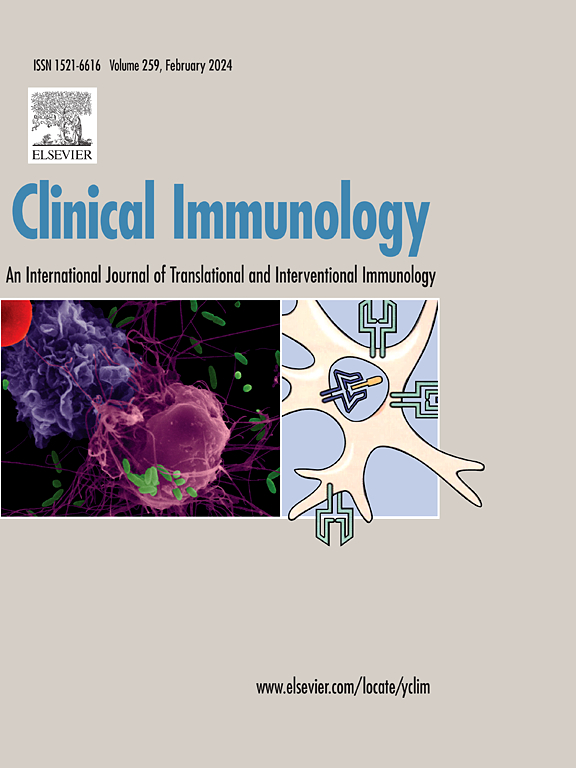Ferroptosis in patients with rheumatoid arthritis
IF 3.8
3区 医学
Q2 IMMUNOLOGY
引用次数: 0
Abstract
Background
Rheumatoid arthritis (RA) is a chronic autoimmune disease characterized by synovial inflammation and joint destruction. Ferroptosis, an iron-dependent form of regulated cell death driven by lipid peroxidation, has recently emerged as a potential contributor to RA pathogenesis.
Methods
A systematic literature review was conducted to explore the mechanisms of ferroptosis in RA, focusing on iron metabolism dysregulation, oxidative stress, and immune cell dysfunction. Databases including PubMed, Embase, and Web of Science were searched for relevant studies.
Results
RA patients exhibit paradoxical iron distribution, with systemic deficiency but synovial overload, promoting ferroptosis. Key findings include: (1) Iron accumulation and lipid peroxidation exacerbate synovial inflammation; (2) Ferroptosis differentially affects immune cells (M1/M2 macrophages, T cells) and fibroblast-like synoviocytes (FLS); (3) Antioxidant defenses (GPX4) are impaired in RA, while some disease-modifying drugs (leflunomide, sulfasalazine) may modulate ferroptosis.
Conclusion
Ferroptosis plays a critical role in RA progression by disrupting synovial homeostasis. Targeting ferroptosis pathways offers promising therapeutic potential, though further research is needed to clarify cell-specific effects and optimize interventions.
类风湿性关节炎患者的上睑下垂
背景类风湿性关节炎(RA)是一种以滑膜炎症和关节破坏为特征的慢性自身免疫性疾病。铁下垂是一种由脂质过氧化驱动的铁依赖性细胞死亡形式,最近被认为是RA发病的潜在因素。方法系统回顾文献,从铁代谢失调、氧化应激、免疫细胞功能障碍等方面探讨RA中铁下垂的机制。检索PubMed、Embase和Web of Science等数据库查找相关研究。结果ra患者铁分布矛盾,全身缺铁但滑膜超载,促进铁下垂。主要发现包括:(1)铁积累和脂质过氧化加剧滑膜炎症;(2)铁下垂对免疫细胞(M1/M2巨噬细胞、T细胞)和成纤维细胞样滑膜细胞(FLS)的影响存在差异;(3)抗氧化防御(GPX4)在RA中受损,而一些疾病改善药物(来氟米特,磺胺吡啶)可能调节铁凋亡。结论上睑下垂通过破坏滑膜平衡在RA的进展中起关键作用。虽然需要进一步的研究来阐明细胞特异性效应和优化干预措施,但靶向铁下垂途径提供了有希望的治疗潜力。
本文章由计算机程序翻译,如有差异,请以英文原文为准。
求助全文
约1分钟内获得全文
求助全文
来源期刊

Clinical immunology
医学-免疫学
CiteScore
12.30
自引率
1.20%
发文量
212
审稿时长
34 days
期刊介绍:
Clinical Immunology publishes original research delving into the molecular and cellular foundations of immunological diseases. Additionally, the journal includes reviews covering timely subjects in basic immunology, along with case reports and letters to the editor.
 求助内容:
求助内容: 应助结果提醒方式:
应助结果提醒方式:


